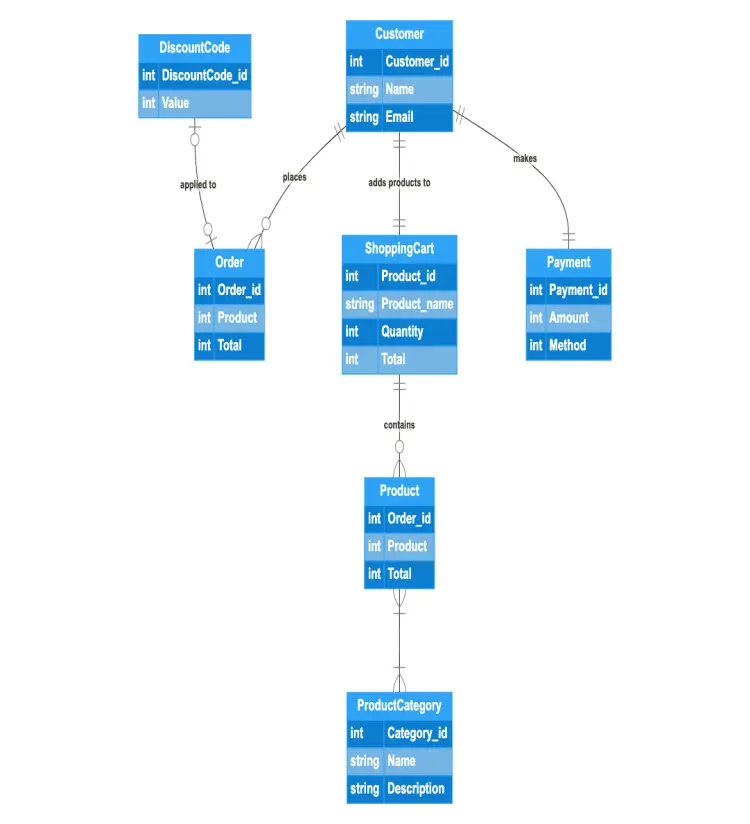This entity-relationship diagram illustrates an online shopping system. The customer adds products to the shipping cart, thus the shopping cart can contain zero or many products. Each product has a category. After the customer adds products to the shopping cart, the customer places the order. A discount code might be applied to this order. Then the customer goes to checkout and makes a payment.

Edit this diagram in Gleek
Online shopping system diagram code in Gleek
Customer
string Customer_id
string Name
int Email
Order
int Order_id
int Product
string Total
Product
int Order_id
int Product
string Total
DiscountCode
int DiscountCode_id
int Value
Customer {1}-places-{0..n} Order
Product {1..n}-is added to-{0..n} Order
DiscountCode {01}-applied to-{01} Order
About ER diagrams
We often make an entity-relationship (ER) diagram, ERD, or entity-relationship model, in the early stages of designing a database. An ERD is perfect for quickly sketching out the elements needed in the system. The ERD explains how the elements interact. ER diagrams can be shared with colleagues. Their simplicity makes them ideal even for non-technical stakeholders.
Similar ER diagram examples
Hospital management system entity-relationship diagram
Banking system entity-relationship diagram
Online doctor appointment system ER diagram
Product management system ER diagram
Travel management system Er diagram
Online food delivery entity-relationship diagram
College management system ER diagram
Simple order process entity-relationship diagram
Daily expense tracker entity-relationship